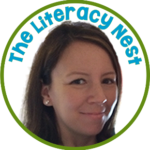
by PRIDE Reading Program Admin | Oct 24, 2017 | A PRIDE Post, Articles & Resources
As a very special October treat, we have guest blogger Emily Gibbons from the Literacy Nest to share some really helpful and practical tips teaching long and difficult words to struggling readers. THANK YOU Emily, for writing such a great post for our PRIDE readers!
How do you help your students read and spell multisyllabic words effectively?
We all know how critical it is to learn how to read and spell strategically for better accuracy, fluency, vocabulary development and overall comprehension. Providing effective strategies for reading and spelling multisyllabic words gives students the foundation they need to become successful readers.
One reason many students get hung up on reading is that they get stumped on longer or harder words they can’t understand. Teaching them a process for working through multisyllabic words instead of offering ineffective techniques like guessing or looking at a picture, will empower them to read through text with ease.
Here are some tips for reading multisyllabic words effectively if they find themselves stuck. You will want to have some post-its, or access to a small white board.
- Have them locate and see if they can identify the vowel graphemes in the word by underlining them. (Vowel teams are one sound).
- Box any familiar suffixes.
- Circle familiar prefixes.
- Use knowledge of syllables to decode the vowel sounds.
- Say the whole word and see if it makes sense.
- Use a pencil to scoop under each syllable, blending left to right.
- Check the context for clarification. Does it make sense?
Practice these steps with your students. It will help them when they need to do it on their own. Again, you’re creating a foundation for a love of reading that they will use now and in the future. You’re showing them how to solve difficult problems and how to get past something that stumps them, such as a long, multisyllabic word they may not be familiar with.
Some of the most important things you will teach your students are how to read and how to spell. Getting familiar and comfortable with reading, spelling, and language are very important skills that students take with them for the rest of their lives. It can be intimidating, however, especially at first and when faced with big words that are new to them.
The biggest hurdle for children who struggle with reading is taking their decoding knowledge and applying into encoding, or spelling knowledge. This can take a while to develop. Implementing a multisensory approach which includes opportunities for seeing, hearing, spelling, writing and even touching multisyllabic words simultaneously helps to build those new neural pathways that struggling readers need to become strategic and efficient readers and spellers.
When teaching your students to spell longer words effectively, here are some tips:
- Repeat the word and give it in a sentence
- Make a line for each spoken syllable
- Pronounce each syllable one by one
- Segment the sounds in each syllable and write each one
- Check for sounds and rules
- Reread
Go over these steps with your student. Show them examples out loud with a couple of different words so that they can get very familiar with the process. This is what is going to help them when they are alone, facing a word they don’t know how to spell. When they are taking a test, or writing for a grade, they need to be able to fall back on the steps without guidance, to figure it out for themselves.
This goes a step beyond just memorizing how to spell certain words and also teaching problem solving skills when it comes to figuring out how to spell other words in the future. Where there is a problem, there is a solution to fix it. You’re teaching the formula they will take with them for the rest of their lives.
Thank you so much Emily for writing this wonderful post today for our readers. If you are interested in purchasing an Orton-Gillingham curriculum that is heavily scripted, super duper easy to use and highly affordable, check out The PRIDE Reading Program here.
Thank you for stopping by today and reading my Post.

About Emily
Emily Gibbons, M.Ed. is an International Dyslexia Association, certified dyslexia practitioner. She was trained in the Orton-Gillingham approach through an International Multisensory Structured Language Education Council, accredited program as well as Project Read. Emily was an inclusion classroom teacher for over thirteen years before starting The Literacy Nest, LLC. She is a mom of four children and lives in MA. Visit the Literacy Nest here.

by PRIDE Reading Program Admin | Oct 23, 2017 | A PRIDE Post, Dyslexia
I have watched many families throughout my career as an Orton-Gillingham tutor, lose valuable time and money when choosing the wrong person or the wrong program to tutor their dyslexic child. I know that these parents had great intentions but simply did not take the time or do the research necessary to become informed. Several essentials make up a successful plan for your child to get the most out of his or her dyslexia tutor.
Use Orton-Gillingham
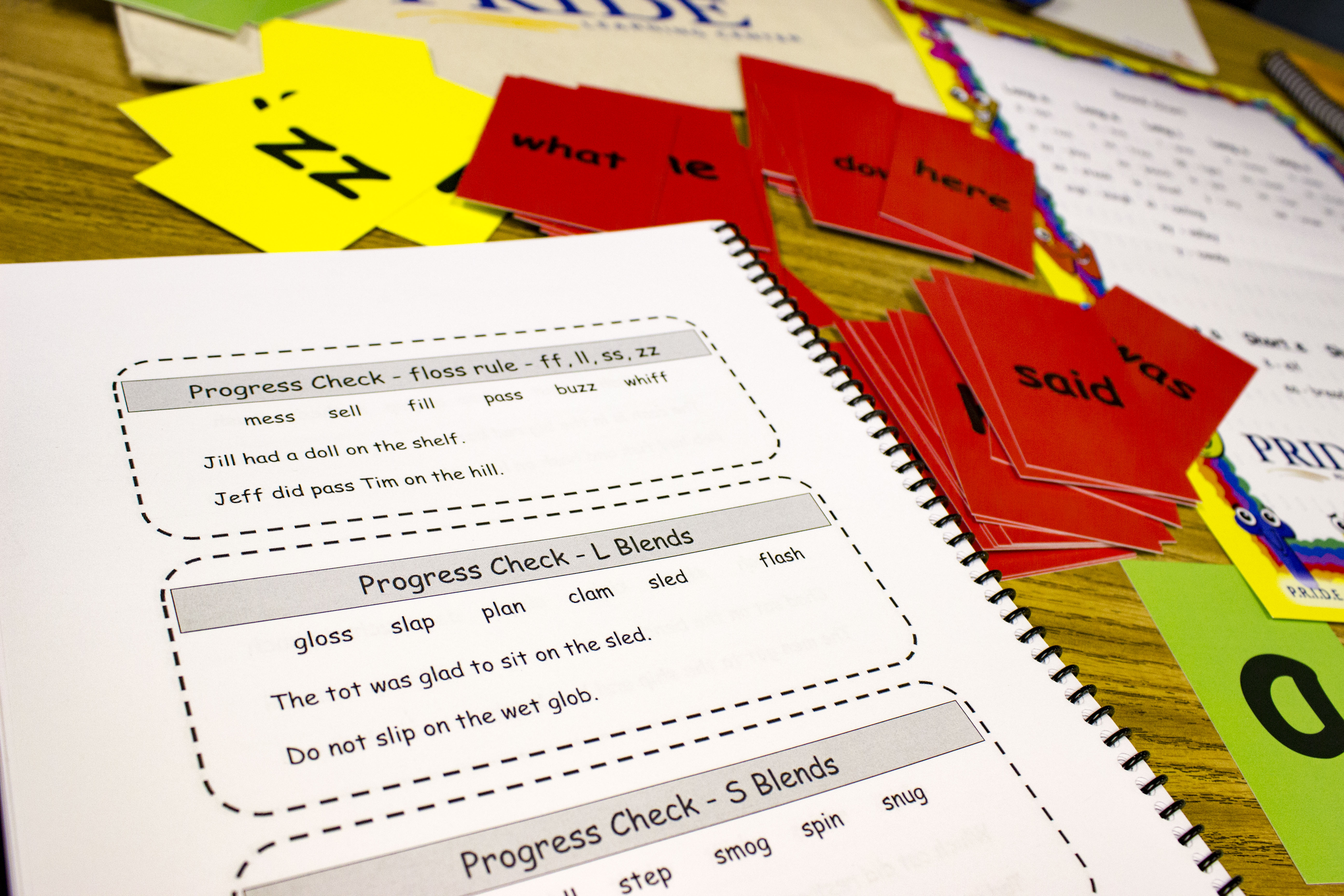
The Orton-Gillingham approach is the “grandmother” dyslexia tutoring program from which many others are derived. It was developed in the 1930s and 1940s by neurologist Samuel Orton and linguists June Orton and Anna Gillingham. Together they developed this amazing way of teaching the structure of letter-sound correspondences, using a multi-sensory method. A dyslexia tutor that is trained in Orton-Gillingham will be able to tutor your child in reading, writing, spelling and comprehension strategies correctly. If you are unable to find a dyslexia tutor trained in Orton-Gillingham, you can always hire a tutor that you like and hand them an Orton-Gillingham tutoring program that they can use with your child.
Orton-Gillingham tutoring programs:
The PRIDE Reading Program is a multisensory, Orton-Gillingham curriculum for tutoring reading, writing, spelling and comprehension. It is taught in a step-by-step progression using an easy to follow On-Line Teaching Guide that is heavily scripted out. Because it is so easy to follow the script and it also comes with online demonstrations on how to teach each step, tutors with little or no experience with Orton-Gillingham can implement it quite easily.
The Barton Reading Program is a teaching method based on the Orton-Gillingham approach. It comes with videos that explain how to teach each lesson. It is easy to learn this system and easy to teach it.
The All About Learning has an All About Reading Program and an All About Spelling Program. These programs offer intense reading and spelling lessons utilizing the Orton-Gillingham methodology. They are both highly interactive multi-sensory programs that are scripted and illustrated and easy to follow.
Use 1:1

Dyslexia tutoring must be delivered 1:1 for your child to progress the most. Keep in mind that the dyslexic student is behind his or her classmates and must make more progress than they do or catch-up will never happen. If your child is far behind, he or she must make a huge leap to catch up. Those that never make that leap might very well stay behind forever. In a 1:1 lesson, the dyslexia tutor will customize the program to fit your child. The tutor will slow down, repeat, speed up or change the pace as needed. In a group setting, the tutor has to shoot for the middle of the group, so if your child is slower than the rest they will be forced to move too quickly and the information will not “stick.” If your child needs to move faster than the group but is forced to slow down to stay together, your child will be bored to death. Being bored will result in a lack of motivation and also ignites difficult behavior. Some really great 1:1 dyslexia tutoring centers are:
Lindamood Bell is a learning approach that can help students who struggle with reading and other learning issues. It offers 1:1 instruction at private learning centers throughout the world.
PRIDE Learning Center employs the Orton-Gillingham, multisensory approach to reading, writing, spelling and comprehension. PRIDE will send a trained dyslexia tutor to your home, work, school or library. They also run many Orton-Gillingham summer camp programs throughout the United States. Their dyslexia tutors are background checked, have strong backgrounds in special education and are warm, nurturing instructors trained to implement the PRIDE Reading Program.
Your child with dyslexia will face many challenges in school at various times. By being a loving and pro-active parent and getting your child into the right program with the right kind of a dyslexia tutor will really benefit your child’s self-esteem, love of learning and academic success.
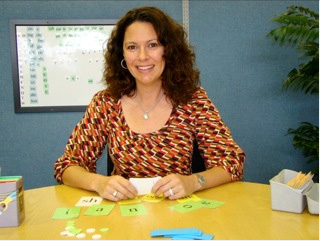
Karina Richland, M.A., developed the PRIDE Reading Program, an Orton-Gillingham program for struggling readers, based on her extensive experience working with children with learning differences over the past 30 years. She has been a teacher, educational consultant and the Executive Director of PRIDE Learning Centers in Southern California. Please feel free to email her with any questions at info@pridelearningcenter.com.

by PRIDE Reading Program Admin | Oct 2, 2017 | A PRIDE Post, Dyslexia
Do you worry that your child might have dyslexia? The warning signs are there. Your child is struggling with reading, writing and spelling. You might be using your intuition that something is wrong. What should you do?
Get a Diagnosis!
Diagnosis is the fundamental first step in successfully helping a child with dyslexia and the earlier, the better. It is never a good idea to wait or prolong testing. This will only put the child with dyslexia further behind. Children, who receive help early on, can catch up to their classmates. Later-identified children miss out on essential practice and miss out on an effective dyslexia remediation program during the crucial window of opportunity. So where do you go for a diagnosis… here are some suggestions:
- A licensed educational psychologist
- A Neurologist
- A Medical Doctor
- A Speech Pathologist
- The Special Education Department at a university or school district
Practice Reading A Lot!
Reading fluency comes from repeatedly practicing the same words over and over again so that the brain eventually identifies the words rapidly. Poor readers receive the least amount of reading practice although they need it the most. This is mostly because they avoid reading, read less than their classmates, and as a result fall progressively behind their peers in reading skills. With a proper dyslexia remediation program the student will be able to practice reading intensively and often. So how should your child with dyslexia practice reading a lot?
- Make your child read at least 20 minutes a day before they are allowed to get on any technology.
- Give your child materials that motivate them to read.
- Give them easy reading. Let them read below their grade level. Its about fun and practice, not torture.
- Get into the habit and routine of reading the same time each day.
Catch-up with an Intensive Reading Remediation Program!
A child who has dyslexia that is not identified until the third grade or later is already thousands of unlearned words behind the other readers. This is a gap that might never get closed without an intensive reading remediation program at this point. The best intervention is prevention in kindergarten or remediation beginning in first grade. After first grade it is just remediation year after year. And that’s a lot of catch up to do.
Reading instruction for the child with dyslexia must be delivered with great intensity. Children diagnosed with dyslexia are behind in their reading levels and for them to catch up with their classmates will need to make a big leap forward or else they will remain behind. Optimally, a child who is struggling with reading should be taught one-on-one and should receive this specialized reading instruction 2-3 hours five days a week. A larger group or less time will greatly undermine the possibilities of success. Use the long summer months to send your child to a summer Orton-Gillingham reading camp for intensive instruction. Summers are a great time to catch up and get ahead.
Make sure you find the Right Program with the Right Teacher!
A child with dyslexia will take in and process information differently and needs to be taught with a specialized program. The content must be a research-based scientifically proven method that is delivered with a sequential, systematic, cumulative and structured multisensory reading program. The Orton-Gillingham method, for example, is a perfect example of a reading approach that is proven to work for children with dyslexia. Orton-Gillingham uses a specific scope and sequence that works with kids with dyslexia and closes all reading gaps. It’s a really remarkable reading method. I recommend you check out The PRIDE Reading Program as the perfect program to teach a child with dyslexia. It comes with training videos and is really easy to implement. It is heavily scripted out, so you don’t need to be a certified teacher to use the program. Using the combination of the right program and the right instructor is the key to your child’s success.
A child with dyslexia who is not identified early may require as much as 100-200 hours of intensive instruction if they are going to close the reading gap. The longer that identification and effective reading instruction are delayed, the longer the child will require catching up. Fortunately, with the proper assistance and help, most students with dyslexia are able to learn to read and develop strategies to become successful readers.
Learn more about the New PRIDE Reading Program

Karina Richland, M.A. is the Founder of Pride Learning Centers, located in Los Angeles and Orange County. Ms. Richland is a certified reading and learning disability specialist. She is also the author of the PRIDE Reading Program. Ms. Richland speaks frequently to parents, teachers, and professionals on learning differences, and writes for several journals and publications. You can reach her by email at info@pridelearningcenter.com or visit the PRIDE Learning Center website at: www.pridelearningcenter.com
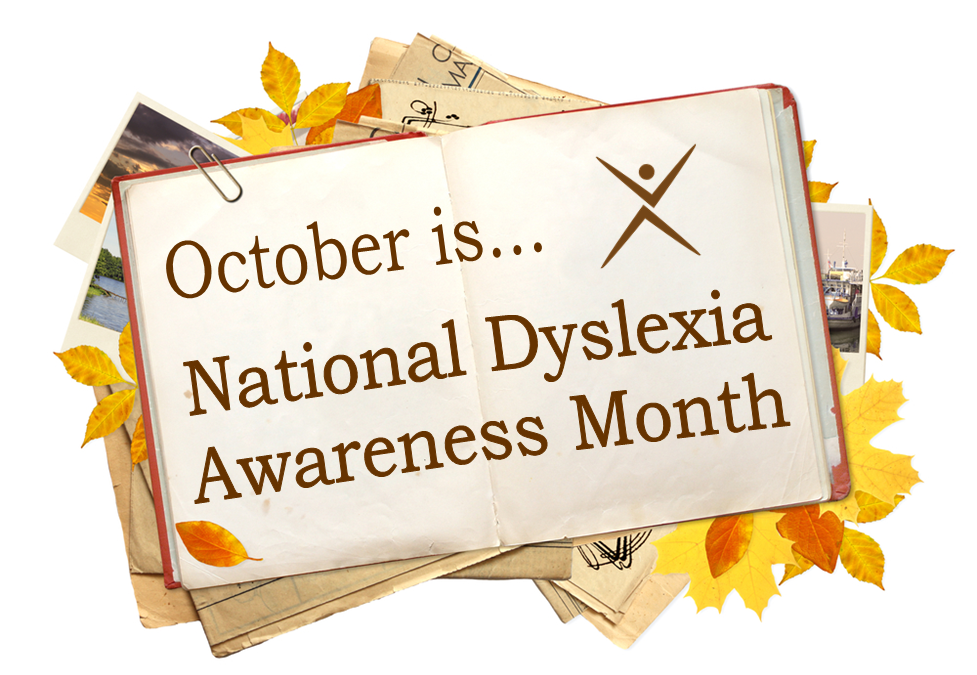
by PRIDE Reading Program Admin | Sep 29, 2017 | A PRIDE Post, Dyslexia
This October is National Dyslexia Awareness Month, and PRIDE Learning Centers is helping to spread the word!
Did you know that Dyslexia is estimated to affect some 20-30 percent of our population? This means that more than 2 million school-age children in the United States are dyslexic! We are here to help.
What is Dyslexia?
Although children with dyslexia typically have average to above average intelligence, their dyslexia creates problems not only with reading, writing and spelling but also with speaking, thinking and listening. Often these academic problems can lead to emotional and self-esteem issues throughout their lives. Low self-esteem can lead to poor grades and under achievement. Dyslexic students are often considered lazy, rebellious or unmotivated. These misconceptions cause rejection, isolation, feelings of inferiority, and discouragement.
The central difficulty for dyslexic students is poor phonemic awareness. Phonemic awareness is the ability to appreciate that spoken language is made up of sound segments (phonemes). In other words, a dyslexic student’s brain has trouble breaking a word down into its individual sounds and manipulating these sounds. For example, in a word with three sounds, a dyslexic might only perceive one or two.
Most researchers and teachers agree that developing phonemic awareness is the first step in learning to read. It cannot be skipped. When children begin to learn to read, they first must come to recognize that the word on the page has the same sound structure as the spoken word it represents. However, because dyslexics have difficulty recognizing the internal sound structure of the spoken word to begin with, it is very difficult for them to convert the letters of the alphabet into a phonetic code (decoding).
Although dyslexia can impair spelling and decoding abilities, it also seems to be associated with many strengths and talents. People with dyslexia often have significant strengths in areas controlled by the right side of the brain. These include artistic, athletic and mechanical gifts. Individuals with dyslexia tend to be very bright and creative thinkers. They have a knack for thinking, “outside-the-box.” Many dyslexics have strong 3-D visualization ability, musical talent, creative problem solving skills and intuitive people skills. Many are gifted in math, science, fine arts, journalism, and other creative fields.
Symptoms of Dyslexia
Preschoolers
- Late talking, compared to other children
- Pronunciation problems, reversal of sounds in words (such as ‘aminal’ for ‘animal’ or ‘gabrage’ for ‘garbage’)
- Slow vocabulary growth, often unable to find the right word (takes a while to get the words out)
- Difficulty rhyming words
- Trouble learning numbers, the alphabet, days of the week
- Poor ability to follow directions or routines
- Does not understand what you say until you repeat it a few times
- Enjoys being read to but shows no interest in words or letters
- Has weak fine motor skills (in activities such as drawing, tying laces, cutting, and threading)
- Unstable pencil grip
- Slow to learn new skills, relies heavily on memorization
School Age Children
- Has good memory skills
- Has not shown a dominant handedness
- Seems extremely intelligent but weak in reading
- Reads a word on one page but doesn’t recognize it on the next page or the next day
- Confuses look alike letters like b and d, b and p, n and u, or m and w.
- Substitutes a word while reading that means the same thing but doesn’t look at all similar, like “trip” for “journey” or “mom” for “mother.”
- When reading leaves out or adds small words like “an, a, from, the, to, were, are and of.”
- Reading comprehension is poor because the child spends so much energy trying to figure out words.
- Might have problems tracking the words on the lines, or following them across the pages.
- Avoids reading as much as possible
- Writes illegibly
- Writes everything as one continuous sentence
- Does not understand the difference between a sentence and a fragment of a sentence
- Misspells many words
- Uses odd spacing between words. Might ignore margins completely and pack sentences together on the page instead of spreading them out
- Does not notice spelling errors
- Is easily distracted or has a short attention span
- Is disorganized
- Has difficulties making sense of instructions
- Fails to finish work on time
- Appears lazy, unmotivated, or frustrated
Teenagers
- Avoids reading and writing
- Guesses at words and skips small words
- Has difficulties with reading comprehension
- Does not do homework
- Might say that they are “dumb” or “couldn’t care less”
- Is humiliated
- Might hide the dyslexia by being defiant or using self-abusive behavior
Adults
- Avoids reading and writing
- Types letters in the wrong order
- Has difficulties filling out forms
- Mixes up numbers and dates
- Has low self-esteem
- Might be a high school dropout
- Holds a job below their potential and changes jobs frequently
Treatment
The sooner a child with dyslexia is given proper instruction, particularly in the very early grades, the more likely it is that they will have fewer or milder difficulties later in life.
Older students or adults with dyslexia will need intensive tutoring in reading, writing and spelling using an Orton-Gillingham program. During this training, students will overcome many reading difficulties and learn strategies that will last a lifetime. Treatment will only “stick” if it is incorporated intensively and consistently over time.
Students who have severe dyslexia may need very intensive specialized tutoring to catch up and stay up with the rest of their class. This specialized tutoring helps dyslexic students become successful in reading, writing, spelling, grammar, and vocabulary. It also will help them with math, and word problems. Fortunately, with the proper assistance and help, most students with dyslexia are able to learn to read and develop strategies to become successful readers.

Karina Richland, M.A., developed the PRIDE Reading Program, an Orton-Gillingham program for struggling readers, based on her extensive experience working with children with learning differences over the past 30 years. She has been a teacher, educational consultant and the Executive Director of PRIDE Learning Centers in California. Please feel free to email her with any questions at info@pridelearningcenter.com.
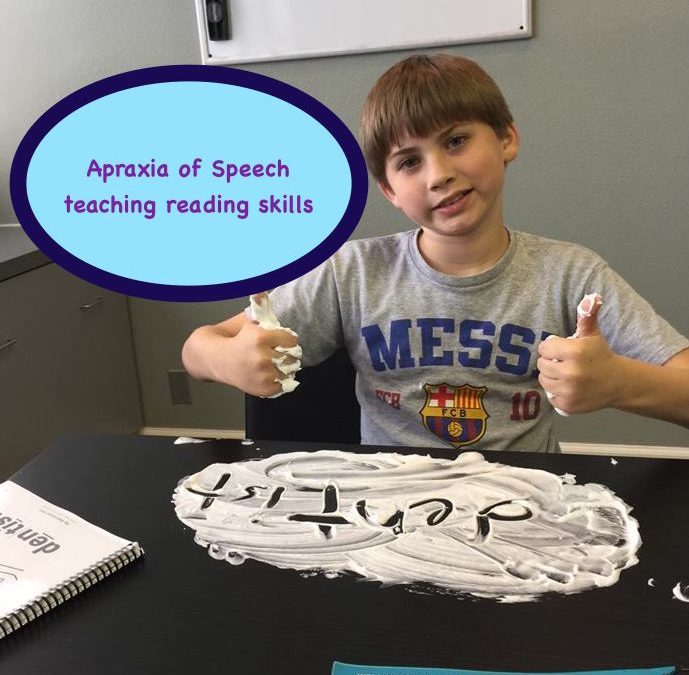
by PRIDE Reading Program Admin | Aug 29, 2017 | A PRIDE Post, Apraxia of Speech
Apraxia of Speech is a speech disorder that makes it difficult for children to correctly pronounce syllables and words. When a child struggles with saying the sounds, they simultaneously struggle with reading, writing and comprehending the sounds.
To read proficiently, a child requires highly integrated skills in word decoding and comprehension and draws upon basic language knowledge such as semantics, syntax, and phonology. Children with speech and language impairments, such as Childhood Apraxia of Speech (CAS), have deficits in phonological processing. For these children, phonemic awareness, motor program execution, syntax and morphology will interfere with the ability to acquire the skills necessary to become proficient readers.
So… how does a child with Apraxia of Speech learn how to read?
With a multisensory, structured, systematic, cumulative and repetitive reading program plus intensive therapy in phonemic awareness and phonological processing!
What does multi-sensory mean?
See it – Say it – Move with it – Touch it!
Multisensory teaching is an important aspect of instruction for the child with Apraxia of Speech and is used by most clinically trained therapists. Multisensory teaching utilizes all the senses to relay information to the child. The teacher accesses the auditory, visual, and kinesthetic pathways in order to enhance memory and learning. Links are consistently made between the visual (language we see), auditory (language we hear), and kinesthetic-tactile (language we feel) pathways in learning to read. For example, when learning the letter combination “ong” the child might first look at it and then have to trace the letters in the air while speaking out loud. This combination of listening, looking, and moving around creates a lasting impression for the child as things will connect to each other and become memorable.
What is a structured, systematic, cumulative and repetitive reading program?
The Orton-Gillingham approach is the best!
The most significant component in helping a child with Apraxia of Speech learn to read is utilizing an Orton-Gillingham approach. In Orton-Gillingham, the phonemes are introduced in a systematic, sequential and cumulative process. The Orton-Gillingham teacher begins with the most basic elements of the English language. Using repetition and the sequential building blocks of our language, phonemes are taught one at a time. This includes the consonants and sounds of the consonants. By presenting one rule at a time and practicing it until the child can apply it with automaticity and fluency, the child will have no reading gaps in their word-decoding skills. As the child progresses to short vowels, he or she begins reading and writing sounds in isolation. From there the child progresses to digraphs, blends and diphthongs.
Children are taught how to listen to words or syllables and break them into individual phonemes. They also take individual sounds and blend them into a word, change the sounds in the words, delete sounds, and compare sounds. For example, “…in the word bread, what is the first sound you hear? What is the vowel sound you hear? What is the last sound you hear? Students are also taught to recognize and manipulate these sounds. “…what sound does the ‘ea’ make in the word bread? Say bread. Say bread again but instead of the ‘br’ say ‘h.’- HEAD!
Every lesson the child learns is in a structured and orderly fashion. The child is taught a skill and doesn’t progress to the next skill until the current lesson is mastered. As children learn new material, they continue to review old material until it is stored into the child’s long-term memory. While learning these skills, the child focuses on phonemic awareness. There are 181 phonemes or rules in Orton-Gillingham for students to learn. More advanced readers (middle school) will study the rules of English language, syllable patterns, and how to use roots, prefixes, and suffixes to study words. By teaching how to combine the individual letters or sounds and put them together to form words and how to break longer words into smaller pieces, both synthetic and analytic phonics are taught throughout the entire Orton-Gillingham program.
What is Phonological Processing?
The key to the entire reading process is phonological awareness. This is where a child identifies the different sounds that make words and associates these sounds with written words. A child cannot learn to read without this skill. In order to learn to read, children must be aware and able to sound out each of the phonemes in the English language. A phoneme is the smallest functional unit of sound. For example, the word ‘bench’ contains 4 different phonemes. They are ‘b’ ‘e’ ‘n’ and ‘ch.’
What are some activities in phonological awareness that help?
- Identifying rhymes – “Tell me all of the words you know that rhyme with the word BAT.”
- Segmenting words into smaller units, such as syllables and sounds, by counting them. “How many sounds do you hear in the word CAKE?”
- Blending separated sounds into words – “What word would we have if we blended these sounds together: /h/ /a/ /t/?”
- Manipulating sounds in words by adding, deleting or substituting – “In the word LAND, change the /L/ to /B/.” “What word is left if you take the /H/ away from the word HAT?”
Through phonological awareness, children learn to associate sounds and create links to word recognition and decoding skills necessary for reading. Research clearly shows that phoneme awareness performance is a strong predictor of long- term reading and spelling success for children with speech and language disabilities. In fact, according to the International Reading Association, phonemic awareness abilities in kindergarten (or in that age range) appear to be the best single predictor of successful reading acquisition!
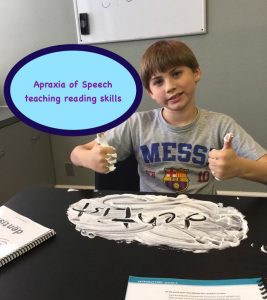
What kind of reading intervention is necessary?
For the child diagnosed with Apraxia of Speech that is already behind his peers in phonemic awareness and reading, the instruction will need to be delivered with great intensity. Keep in mind that this child is behind his classmates and must make more progress if he is to ever catch up. The rest of the class does not stand still to wait, they continue forward. Taking a few lessons once or twice a week will never give the student with CAS the opportunity to catch up. He must make a giant leap; if not, he will always remain behind.
An older child with a speech and language disorder may require as much as 150 to 300 hours of intensive instruction if he or she is ever going to close the reading gap between himself and his peers. The longer identification and effective reading instruction are delayed, the longer the child will need to catch up. In general, it takes 100 hours of intensive instruction to progress one year in reading level. The sooner this remediation is completed, the sooner the child can progress forward with his or her peers.
Children with Apraxia of Speech need more structure, repetition and differentiation in their reading instruction. They need to learn basic language sounds and the letters that make them, starting from the very beginning and moving forward in a gradual step by step process. This needs to be delivered in a systematic, sequential and cumulative approach. For all of this to “stick” the children will need to do this by using their eyes, ears, voices, and hands.
Where do I find an Orton-Gillingham Reading Curriculum?
Click on the video below
If you enjoyed reading this Blog Post, you might also enjoy reading Apraxia of Speech Reading Books. Thank you so much for visiting my blog today!

Karina Richland, M.A., developed the PRIDE Reading Program, an Orton-Gillingham program for struggling readers, based on her extensive experience working with children with learning differences over the past 30 years. She has been a teacher, educational consultant and the Executive Director of PRIDE Learning Centers in Southern California. Please feel free to email her with any questions at info@pridelearningcenter.com. Visit the PRIDE Reading Program website at https://www.pridereadingprogram.com
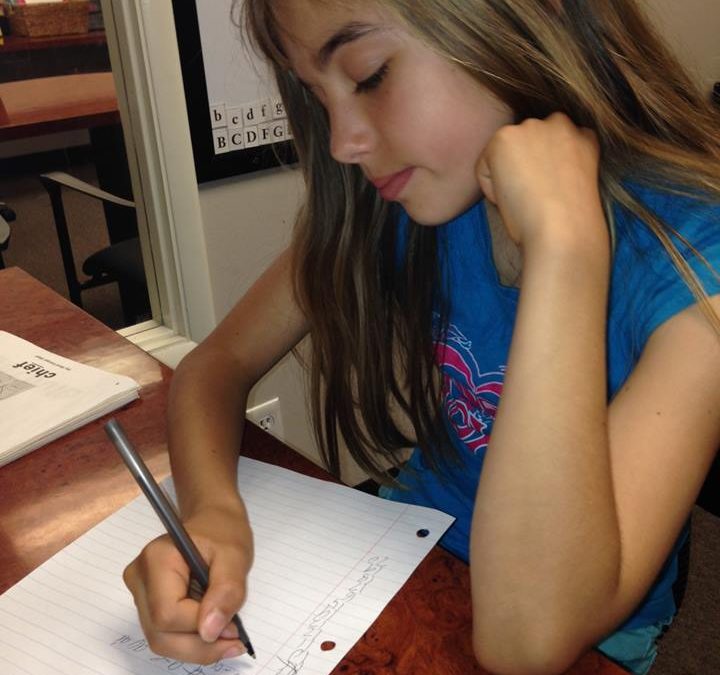
by PRIDE Reading Program Admin | Jul 12, 2017 | A PRIDE Post, Auditory Processing Disorder
The ability to process and learn from oral instructions and oral information is a fundamental skill required throughout life. So how can you help your child strengthen these skills? Here is a list of very easy do it at home activities that you can practice throughout the day to strengthen your child’s auditory processing.
End of the day review
Every night as you tuck your child into bed, discuss the events of the day. Have your child try to remember all the wonderful (or not so wonderful) things that happened that day. Can your child recall the events sequentially?
Play the game – what’s next?
Pick a room in your house and give your child two instructions. For example, “go into the dining room, grab a spoon and hide under the table.” Try to build up to 3 instructions over time. Then switch so that your child gets to give you instructions to follow too.
Follow my rhythm
You can clap a short pattern and have your child repeat it. Make it simple at first (one slow clap, two fast ones and then a slow one). Then slowly increase the complexity and loudness of the claps. Then ask your child to make up a pattern for you to repeat.
I went to the market and I bought…
This is a family game and can be played around the dinner table. Start with “I went to the market and I bought an apple.” The second person says, “I went to the market and I bought an apple an a banana.” The third person says, “I went to the market and I bought an apple and a banana and a bag of chips.” Etc. etc…
Listen to music and memorize the lyrics
Have your child listen to a song and learn to sing the lyrics. Give your child a song that they are unfamiliar with or one that they do not know the words to already. Replay the tune often until your child can sing the entire song.
Listen to Audio books
Audio books force a child to listen. Pick a story that your child enjoys and is excited about listening to. Don’t hesitate to choose books they have already read. Repetition builds understanding, and we all love to read or listen to our favorite books over and over again.
Play Mother May I
Have your child line up and face you (about 20 feet away). Then give your child 2 commands such as, “Take 3 steps forward and touch your nose with your right pinky finger. Or, hop forward 2 hops then do the chicken dance.” The child will ask, “Mother may I?” You answer yes or no. When your child finally gets to you – switch roles. Eventually try to get up to 3 commands.
Memorize a Poem
Have your child memorize a poem and recite it to you. Aim for memorization of at least four to eight short poems during the school year. Keep reciting the old ones and build up a repertoire. Try to pick poems that the child has read and enjoyed. This can begin with simple fun ones and then eventually increase to some rich and deep poetry too.
When you strengthen your child’s auditory processing skills, remember to make it a fun experience for both you and them. Just a few minutes a day with some of the above mentioned activities will hopefully make a big difference.
Learn more about the New PRIDE Reading Program
________________________________________________________________________________

Karina Richland, M.A., developed the PRIDE Reading Program, an Orton-Gillingham program for struggling readers, based on her extensive experience working with children with learning differences over the past 30 years. She has been a teacher, educational consultant and the Executive Director of PRIDE Learning Centers in Southern California. Please feel free to email her with any questions at info@pridelearningcenter.com.
Page 3 of 18«12345...10...»Last » 











